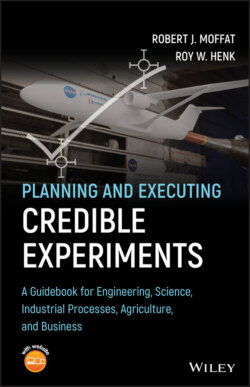Читать книгу Planning and Executing Credible Experiments - Robert J. Moffat - Страница 34
2.3 Beware Measuring Without Understanding: Warnings from History
ОглавлениеThere is an unfortunate tendency, among engineers particularly, simply to measure everything which can be measured, report the results, and hope that someone, someday, will find the results useful. This is a deplorable state of affairs, even though it has a long and honored past. In many respects, it follows the scientific tradition which emerged from Europe in the nineteenth century, when the art of measurement expanded so rapidly in Western civilization.
William Thomson, Lord Kelvin, famously proclaimed: “When you can measure what you are talking about and express it in numbers then you have the beginning of knowledge.” That is still true today but with some limitations (Thomson 1883).
Thomson's enthusiasm for measurements should be interpreted in terms of the times in which he lived. The European scientists of that period were infatuated with measurement. Every new measurement technique developed was applied to every situation for which it seemed to fit. There was no storehouse of knowledge about the physical world. Each new series of measurements revealed order in another part of the physical world, and it appeared that every measurement answered some question, and every question could be answered if only enough measurements were made. That was true partly because there were so many unanswered questions and partly because most of the questions which were being asked at that time could be answered by scalars.
Since that era, experimental work has become more expensive and more complex. The questions that lead us into the lab today usually involve the behavior of systems with many components or processes with several simultaneous mechanisms. It is not easy to translate a “need to know” into an experiment under such complex conditions. The first problem is deciding what scalars (i.e. what measurable items) are important to the phenomenon being investigated. This step often takes place so fast and so early in a test program that its significance is overlooked. When you choose what to measure, you implicitly determine the relevance of the results.
The early years of the automobile industry provide at least one good example of the consequences of “leaping in” to measurements. As more and more vehicles took to the road, it became apparent that some lubricating oils were “better” than others, meaning that automobile engines ran longer or performed better when lubricated with those oils. No one knew which attributes of the oils were important and which were not, and so all the easily measured properties of the “good” oils were measured and tabulated. The result was a “profile of a good oil.” The oil companies then began trying to develop improved oils by tailoring their properties to match those of the “good oil profile.” The result was a large number of oils that had all the desired properties of a good oil except one: they didn't run well in engines!4
